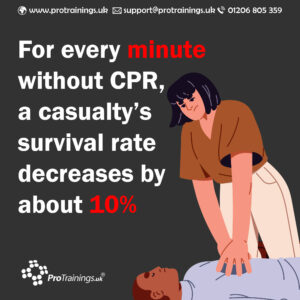Basic Life Support (BLS): A Guide to Saving Lives
Basic Life Support (BLS) refers to the techniques used to keep someone alive in an emergency until professional medical help arrives. This includes providing Cardiopulmonary Resuscitation (CPR), rescue breaths, and chest compressions for individuals who are unresponsive and not breathing normally.
When to Provide Basic Life Support
BLS is crucial in situations where a person is unresponsive, unconscious, or not breathing. These emergencies could include heart attacks, drowning, drug overdoses, or sudden cardiac arrest.
The first thing to do when you encounter someone in need of BLS is to check for danger to ensure the scene is safe for both you and the casualty. If it’s safe to do so, approach and follow these steps.
The DRS ABC Protocol
Before performing CPR, it is important to follow the DRS ABC steps:
- D – Danger: Check for any danger to yourself, the casualty, or others nearby.
- R – Response: Check if the casualty responds by gently shaking their shoulders and asking loudly, “Are you okay?”
- A – Airway: Open the casualty’s airway by tilting their head back and lifting their chin.
- B – Breathing: Look, listen, and feel for normal breathing for no longer than 10 seconds. begin CPR immediately
How to Perform CPR
If the casualty is not breathing normally, you need to begin CPR straight away. CPR consists of chest compressions and rescue breaths:
-
Chest Compressions
- Place the heel of one hand in the centre of the casualty’s chest. Place your other hand on top and interlock your fingers.
- Press down hard and fast at a rate of 100 to 120 compressions per minute (about 2 compressions per second). Push to a depth of 5-6cm.
- Allow the chest to rise fully between compressions.
-
Rescue Breaths
- After 30 compressions, give 2 rescue breaths. (if safe to do so)
- Pinch the casualty’s nose, tilt their head back, and breathe into their mouth, ensuring their chest rises.
- Repeat the cycle of 30 compressions followed by 2 rescue breaths.
Note: If you’re unable or unwilling to give rescue breaths, providing hands-only CPR (continuous chest compressions) is still highly effective.
Using an Automated External Defibrillator (AED)
If available, use an AED as soon as possible. AEDs are designed to be easy to use, with voice instructions guiding you through the process. Attach the pads to the casualty’s chest as directed and follow the AED prompts.
Important: Never stop CPR until one of the following occurs:
- The casualty starts breathing normally.
- You are too exhausted to continue.
- A trained professional arrives and takes over.
- You are instructed to stop by emergency services.
Why Basic Life Support is Important
Immediate and effective BLS can significantly improve a casualty’s chance of survival. For every minute without CPR, a casualty’s survival rate decreases by about 10%. Quick action, especially the correct application of chest compressions and rescue breaths, can keep vital blood flow to the brain and other organs, preventing further damage.

